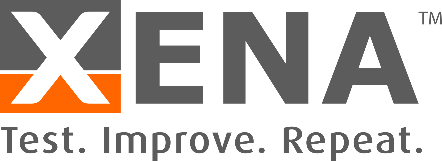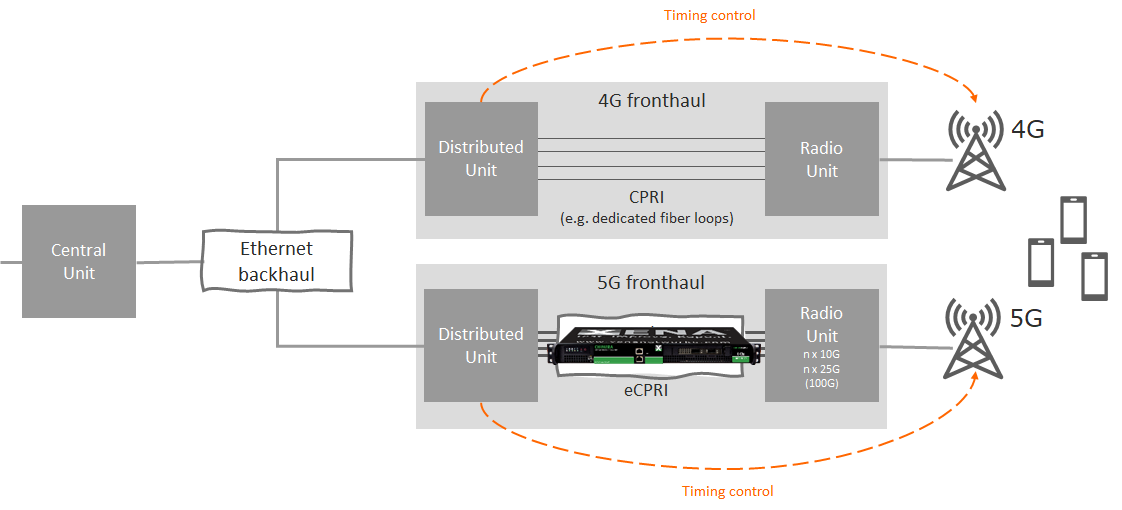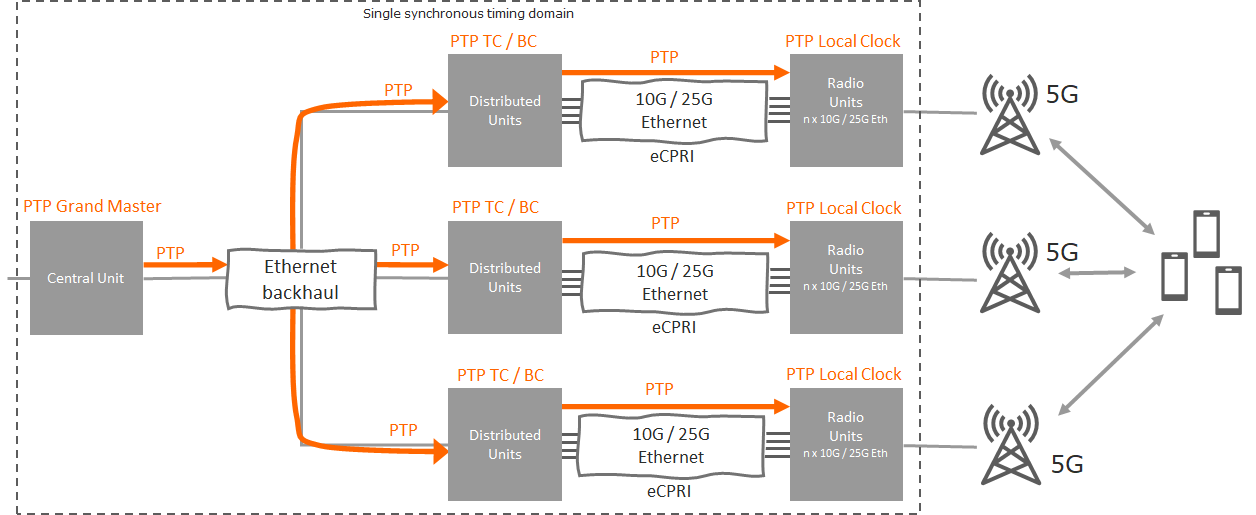
5G Fronthaul Network Testing Considerations

Overview
5G networks offer lower latency, greater flexibility, and increased bandwidth compared to 4G technology. To deliver these improvements, 5G fronthaul networks use different hardware and networking protocols to those found in previous generation networks.
While this technology shift delivers more versatile, scalable, and cost-effective networks, moving away from circuit switched networks or leased lines means 5G fronthaul networks are now subject to Ethernet impairments at the packet level.
Network Equipment Manufacturers (NEMs), Network Infrastructure Providers (NIPs) and Service Providers (SPs) responsible for 5G fronthaul networks will need a way to test how their equipment and applications cope with these network impairments if they want to offer an optimal user experience. We believe that the best way to assure this is to test rigorously in the lab—before the network is deployed.
In this article, we’ll look at why Ethernet impairment testing is crucial in developing, testing, and deploying successful 5G fronthaul networks. We’ll also highlight the protocols that need particular attention and offer advice on what to consider when optimizing your equipment or application performance in 5G fronthaul networks.
Why is impairment testing so important for 5G fronthaul networks?
While moving from 3G to 4G offered an evolution to mobile networks, the move to 5G networks is truly a revolution. 5G uses infrastructure and protocols that are fundamentally different from what has come before.
One of the major differences is the use of eCPRI (enhanced common public radio interface) over Ethernet packet switched networks in 5G fronthaul networks instead of CPRI over circuit switched or leased line networks used in 4G. This offers network operators many advantages, including the ability to build and scale infrastructure on COTS hardware from multiple vendors, and make the most of virtual networking functions.
However, Ethernet comes with networking impairments at the packet level, and it doesn’t natively support end-to-end timing and synchronization. 5G Ethernet fronthaul networks can use eCPRI to carry control and data packets while relying on SyncE (synchronous Ethernet) and PTP (precision time protocol) to synchronize timing across the network.

The changes in 5G architecture mean those responsible for fronthaul networks will be seeing Ethernet impairments and face the challenges of synchronizing time over PTP for the first time. This means 5G NEMs, NIPs and SPs will now need to test how impairment affects their infrastructure, protocols, and applications. And because the timing requirements in fronthaul networks are strict, these tests are crucial. Only by understanding how impairment affects the network can you ensure it delivers an optimal user experience.
This means that NEMs must test their equipment in non-perfect environments to validate that they’re compliant with relevant standards, and to assure that protocols are robust to imperfections like latency, jitter and packet loss.
The NIPs will have to stress their network design to make sure that end to end timing is robust to imperfections like asymmetric delay, packet and link loss. This may be done as part of equipment acceptance testing or to reassure the SP that the network has sufficient margin in case of sub-optimal operating conditions.
The SPs must take the testing to the lab and understand how their applications perform at the limits of the SLA they have with their NIP.
The most efficient and cost-effective way to ensure your network meets the expectations of users is to conduct all this testing in your lab before you deploy your network or application into the real world.
The importance of repeatable, reliable lab testing
As there are certain networking conditions that will only occur randomly and are difficult to reproduce, there is often no way to reliably or repeatably test impairment in a live network.
The only way to truly test and understand how impairment will affect your network is to test in the lab. Doing this requires a reliable, repeatable way to emulate relevant network impairments.
By using a network emulator, you can test specific impairments separately and repeatably, and get a true picture of how each part of your network responds to impairments – both separately and when they are combined. Further, the network emulator provides the statistics you need to validate the behavior of your equipment or application
What protocols need to be tested?
5G networks rely on eCPRI to transfer data across the fronthaul network, and PTP and SyncE to achieve precise end-to-end timing. PTP in particular is vulnerable to asymmetric delay and jitter, while eCPRI is susceptible to large delays and packet loss. That means they both need thorough testing to ensure the fronthaul network performs as expected.

eCPRI
Unlike the proprietary protocols running on CPRI in 4G networks, 5G fronthaul networks use the more standardized eCPRI protocol. eCPRI is responsible for transferring user data and controlling data flow between distribution units (DUs) and radio units (RUs). It also controls how data moves between RUs and 5G antennas.
Any issues with eCPRI can affect data transfer, potentially leading to a loss of user data or control information, lower voice quality, or complete loss of connection. This means eCPRI is vulnerable to network impairments.
As a crucial component of the fronthaul network, it’s imperative that 5G equipment operators and manufacturers rigorously test how eCPRI responds to impairment in their network setups. One example of this is to test what happens during networking congestion, where low priority traffic is dropped for shorter or longer periods of time.
Timing protocols
In 5G networks, antennas have dedicated transmission windows. Adjacent antennas must coordinate to broadcast within these windows, avoid interference, and ensure proper handover between cell towers. That means 5G fronthaul networks have very strict end-to-end timing requirements.
Two timing protocols help maintain timing synchronization in 5G fronthaul networks:
- PTP transmits absolute time and delay data—combining the two to calculate the exact “time of day” at PTP local clocks.
- SyncE forwards exact frequency information from a SyncE clock master to SyncE slave clocks across the network.
While these protocols will be new for fronthaul networks, they are protocols that are well established in other types of network.
PTP sends messages across the network that contain timing information. For this to be useful, PTP-aware network elements must be able to accurately calculate when the PTP Grandmaster clock sent the message, and how long it took to arrive. Then it can subtract this delay from the time it sees in the PTP message.

Relying on delay calculation like this means delayed, duplicated, or dropped packets can lead to false readings. That means PTP is particularly susceptible to jitter and asymmetric impairment. Uneven impairment can have a big impact on how slave clocks understand timing—leading to timing drift in the PTP slave, and synchronization issues that affect network stability and availability.
SyncE is also used to synchronize timing in 5G fronthaul networks, but it works differently to PTP. Instead of sending timing information through Ethernet frames, SyncE transmits information through its signal frequency. This means it can’t be impaired by packet defects. However, any testing solution must be able to forward SyncE to accurately test how 5G fronthaul network equipment operates in different conditions, and test small frequency offsets to the SyncE clock.
Only by rigorously testing impairment in a controlled lab environment can you see exactly how it will impact timing protocols and their ability to keep 5G fronthaul networks in sync.
What do I need as part of my test solution?
To truly see the impact jitter, packet drops, delays, duplication, and mis-ordering have on protocols and components, OEMs and network operators will need a well-defined and repeatable way to emulate network traffic and impairment effects. Crucially, solutions are needed that can support easy testing of eCPRI and PTP in 5G fronthaul networks. So, when assessing solutions make sure they can offer:
- Granular control of data flows to be impaired
- The ability to inject jitter, and dropped, delayed, and duplicated packets
- SyncE forwarding between DUs and RUs
- High port density (8 x ports standalone or 48 x ports in a chassis solution)
- Support for 10G and 25G speeds connecting to the DUs and RUs in the 5G fronthaul networks
- Support for 100G for aggregated lines
- Bi-directional traffic and impairment emulation
- Comprehensive scripting and automation features for repeatable testing
- Extensive statistics, so you can measure the impact of impairment
These features are crucial for testing how impairment affects the networking protocols and features used in 5G fronthaul networks

Have a question or comment?
We'd love to hear it. Fill out our General Inquiry Form or reach us directly at: info@acentury.co
CONTACT US